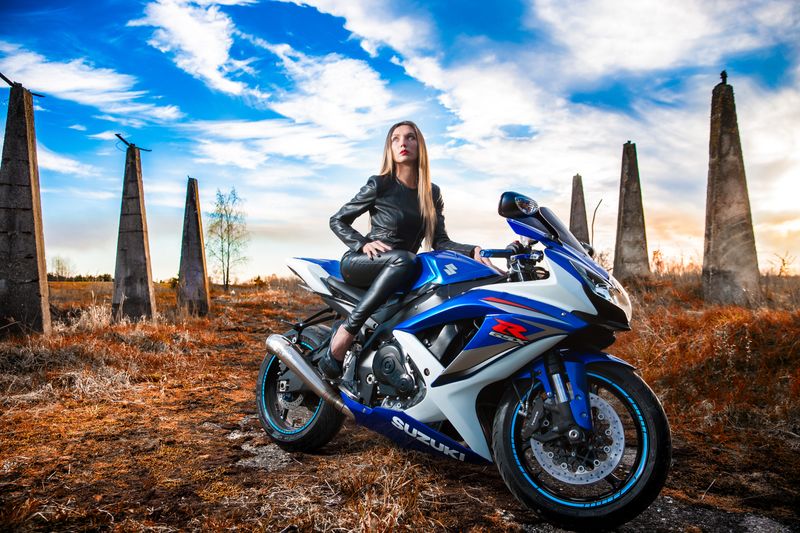The Isle of Man TT: The Thrill and Danger of Motorcycle Racing
The Most Dangerous Motorsport Race in the World
The Isle of Man TT, which stands for both Tourist Trophy and Time Trial, is renowned as the most dangerous motorsport race in the world. Since its inception in 1907, more than 250 riders and several spectators have lost their lives on the challenging course. Despite the evident risks, each year riders from around the globe eagerly seek an invitation to partake in this adrenaline-fueled event.
One such rider is Richard “Milky” Quayle, a local Manx and former winner of the TT. Quayle understands the dangers all too well, having experienced the highs of victory in 2002 and the lows of a life-altering collision the following year. When asked about the risk, Quayle passionately emphasizes that participating in the Isle of Man TT is “the best thing in the world anyone could ever want to do.” He firmly believes that the race shouldn’t be stopped just because of the potential for injury.
An Unconventional Race on Public Roads
What sets the Isle of Man TT apart from other motorsport races is its unique setting. Situated in the middle of the Irish Sea, with England to the east and Ireland to the west, the Isle of Man is known for its picturesque emerald fields and rugged coastlines dotted with the ruins of medieval castles. The island typically maintains a slow-paced and tranquil ambiance, but for two weeks each year starting at the end of May, everything changes.
Racers zoom down public roads that are open to normal traffic until just 30 minutes before the race begins. The course covers a staggering 37 miles, encompassing much of the island, passing through villages and pastures. Riders navigate over 200 turns, mere inches away from rock walls, buildings, residents, and fans.
In the words of British rider Peter Hickman, one of the top motorcycle racers in the world, the Isle of Man TT offers a unique experience. He has triumphed in 13 TT races, including the Senior TT, covering 225 miles over six grueling laps. Hickman describes the sensation of racing through a village as a feeling that “you shouldn’t be doing it, but we’re allowed.”
The Intense Challenge of Motorcycle Racing
During the two-week TT event, approximately 100 motorcycle racers take to the roads. There are five different classes of races categorized by motorcycle power and the number of laps. Riders continuously brake, shift gears, and twist the throttle, all while negotiating the demanding course. On the open straights, speeds can reach a staggering 200 mph, offering an unrivaled thrill for both riders and spectators.
One distinct aspect of the race is the “sidecar” event, where three-wheeled contraptions hurtle around the course with a driver and a passenger. The passenger’s role is to manipulate the weight distribution to navigate every curve, mere inches above the ground.
Experienced rider Richard “Milky” Quayle, who first participated in 1997 and later became a champion in 2002, knows the dangers all too well. Growing up on the Isle of Man, he witnessed the racers in action every year. In 2003, a small mistake nearly cost him his life when he caught the rock face with his shoulder, violently crashing into the wall. Reflecting on the risks, Quayle somberly states, “When it goes bad, it can hurt you.”
The Isle of Man’s Independent Spirit and Love for Racing
The existence of such a perilous race on a seemingly tranquil island sparks curiosity about why the Isle of Man allows it to continue. Dr. Catriona Mackie, a history teacher at a university on the island, explains that the people of the Isle of Man have always had an independent streak. The island has a rich history, with English, Irish, and Viking influences blending together to create the unique Manx identity.
The Isle of Man has long embraced tourism as a means of supporting its economy. In the early 20th century, when the United Kingdom banned road closures for racing, the Isle of Man saw an opportunity to attract tourists. The island allowed cars and drivers to race on its roads starting in 1904, with motorcycles joining in 1907. The decision proved to be a tremendous success, drawing visitors and bolstering the local economy.
Today, the Isle of Man TT is a thriving two-week celebration of motorcycle racing. Motorcycle enthusiasts from all over the world flock to the island to witness the excitement and even ride the public roads that make up the race course. Despite efforts to minimize risks, the race remains dangerous. In the past two years alone, seven riders have lost their lives.
The Constant Pursuit of Thrill and the High Price of Risk
Why would individuals willingly subject themselves to such peril? The allure of the Isle of Man TT lies in the undeniable thrill it provides. The winner of the top-class race receives only around $30,000, a paltry amount compared to other professional sports. It is not the prospect of financial gain that entices these daring riders; it is the pure exhilaration they feel while pushing themselves to the limits.
Champion rider Peter Hickman eloquently captures this sentiment, stating that racing the TT makes him feel truly alive. He recognizes that appreciating life fully often involves embracing risks and testing one’s limits. The inherent danger of the race, including the possibility of death, adds to the profound sense of being truly alive.
Editorial: Balancing Freedom and Safety
The Isle of Man TT serves as a remarkable example of individuals willingly taking risks in search of extraordinary experiences. It sparks a philosophical discussion about the delicate balance between freedom and safety. In a world that often prioritizes security and minimizes risks, events like the Isle of Man TT stand as a testament to the human spirit’s yearning for adventure and adrenaline.
It is crucial to acknowledge the inherent dangers of such extreme sports and ensure that appropriate safety measures are in place to protect participants and spectators. The organizers of the Isle of Man TT have taken steps to mitigate risks, including spacing out the riders at the start line and strictly limiting the number of participants. However, it is essential to continue assessing and improving safety protocols while respecting the tradition and spirit of the race.
Offering guidance and mentorship to first-time riders, as exemplified by Richard “Milky” Quayle, is an excellent way to ensure that participants understand the challenges they will face. By sharing knowledge and experiences, veteran riders can help newcomers navigate the course more safely, reducing the potential for accidents.
The Isle of Man holds firmly to its independent spirit and guards its traditions fiercely. It remains vital to strike a balance between maintaining the unique and thrilling nature of the TT races while ensuring the well-being of all involved.
Advice: Pursue Thrills Responsibly
While events like the Isle of Man TT can inspire a sense of awe and wonder, it is essential to approach extreme sports with caution and responsibility. If you are drawn to activities that involve significant risks, consider the following:
1. Educate Yourself
Take the time to learn about the risks associated with your chosen activity. Understand all safety guidelines and protocols, and never underestimate the potential dangers involved.
2. Seek Proper Training
Enroll in training programs or seek guidance from experienced individuals who can help you develop the necessary skills and knowledge to engage safely in your chosen activity. Do not attempt extreme sports without appropriate preparation.
3. Prioritize Safety Equipment
Invest in high-quality safety equipment specifically designed for your chosen sport. Helmets, protective gear, and other safety measures can significantly reduce the risks of injury.
4. Respect Your Limits
Recognize your personal limits and be mindful of the risks you are willing to take. Pushing boundaries is an inherent part of extreme sports, but it is crucial to do so with self-awareness and consideration for your capabilities.
5. Assess the Environment
Take into account the conditions and environment in which you will be participating in extreme sports. Understand the potential hazards and ensure that appropriate safety measures are in place.
In conclusion, the Isle of Man TT showcases the adrenaline and thrill that extreme sports can offer. It serves as a reminder that pursuing such activities requires responsible decision-making and a commitment to safety. As long as these principles are upheld, individuals can continue to experience the extraordinary while minimizing the potential for harm.

<< photo by Ferdinand Studio >>
The image is for illustrative purposes only and does not depict the actual situation.
You might want to read !
- The Thrilling Legacy of Remi Lucidi: Exploring the Life and Tragic End of a French Daredevil
- “DJ Khaled’s Shocking Surfing Accident: Reflecting on the Dangers of Extreme Sports”
- Exploring the dangers of extreme sports: The tragic death of BMX biker, Pat Casey
- Can the Red Wings Maintain Their Winning Streak Against the Penguins?
- “The Neymar Blow: Assessing the Impact of His ACL and Meniscus Injuries on Brazil’s World Cup Prospects”
- “Battle on the Gridiron: Cowboys vs. Chargers Monday Night Football Clash”
- Lofty Ambitions and Potential Pitfalls: Dana White’s Surprise Appearance Shakes Up UFC 294 Results
- The Battle for the Big Ten: Nebraska Cornhuskers vs. Northwestern Wildcats
- “Unlocking the Thrills: Your Definitive Guide to Streaming the 2023 F1 Austin Grand Prix on ESPN+”
- David Grann: Unraveling the Mysteries of the Creative Process | 60 Minutes
- “Uncovering Truth: 60 Minutes’ Coverage of a Courageous Whistleblower”.
- Breaking Free: Reevaluating Britney Spears and Justin Timberlake’s Ill-Fated Love Story
- Taylor Swift and Travis Kelce Showcase Their Versatility with Memorable SNL Cameos
- “A Dual Portrait: Unraveling the Enigma of Sam Bankman – Brilliance or Bungling?”




